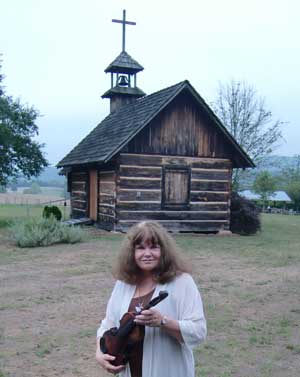[amazon_image id=”0312558171″ link=”true” target=”_blank” size=”medium” class=”alignleft”]The Ballad of Tom Dooley: A Ballad Novel[/amazon_image]Sharyn McCrumb’s latest ballad novel, [amazon_link id=”0312558171″ target=”_blank” ]The Ballad of Tom Dooley[/amazon_link], concerns perhaps the most famous of the Appalachian murder ballads, the story of how Tom Dooley, or Tom Dula as he was really known, came to be hanged for the murder of Laura Foster. Tom Dula was a ne’er-do-well Civil War veteran who was involved with Ann Foster Melton, a married woman and Laura Foster’s cousin. According to the legend, Tom led Laura to believe they were eloping, but murdered her and buried her in a shallow grave on a ridge instead. The motives for the murder have varied from Tom’s blaming Laura for giving him syphilis to avoiding marrying her because she was pregnant. However, many have doubted whether or not Tom Dula really did kill Laura Foster, particularly because he wrote a confession on the eve of his execution asserting that he alone was responsible for Laura’s death, presumably to exonerate Ann Melton, who had been arrested shortly after Tom himself and was charged in Laura’s death as well. McCrumb saw parallels between the story of Tom Dula, Ann Melton, and Laura Foster and Emily Brontë’s [amazon_link id=”0143105434″ target=”_blank” ]Wuthering Heights[/amazon_link]. When I read of this connection on McCrumb’s website, I was even more excited to read The Ballad of Tom Dooley—Wuthering Heights is my favorite book. And McCrumb did not disappoint me on this account.
McCrumb chooses as her two narrators Zebulon Baird Vance, who served North Carolina as governor and senator and came from the Appalachian mountains of western North Carolina himself. Following the Civil War, he was unable to hold a public office for a time and practiced law until this restriction was lifted for Confederate veterans. He was appointed to defend Tom Dula and Ann Melton pro bono. He serves as the stand-in for Mr. Lockwood, the outsider who more or less frames the beginning and end of the story, although unlike Brontë’s Lockwood, he narrates some sections in the middle of the novel. McCrumb’s Nelly Dean is Pauline Foster, a cousin of Ann Melton and Laura Foster’s, who comes to Wilkes County to be treated by a doctor for her syphilis and spreads discord. McCrumb paints her as a sociopath (Nelly isn’t that bad, though I always wonder how much she is telling the truth about Catherine and Heathcliff). Pauline narrates the bulk of the story. Her motive for causing so much destruction seems to stem from envy of Ann and a sense that she has somehow been mistreated by Ann.
Ann Melton and Tom Dula serve as McCrumb’s Catherine and Heathcliff, but no Cathy Linton, Linton Heathcliff, or Hareton Earnshaw redeem the families and set things to rights in the next generation. Ann Melton is just as narcissistic and unlikeable as Catherine Earnshaw, though Tom Dula does not come off nearly as badly as Heathcliff. McCrumb even rewrites some passages from Wuthering Heights into her novel, including the famous “I am Heathcliff” speech:
“We’re just the same, Tom and me. we come from the same place, and we’re made of the same clay. And maybe the devil spit in it before God made us, but at least we belong together, him and me.”
“It seems hard lines on your husband, you feeling like that.”
“I love them both, Pauline, but not in the same way. My love for James is like that field out there that he spends half his time plowing and sowing and weeding, and all. It will change. The crops die in the winter, or dry up in a summer drought, or the soil gives out, so that you must let it lie fallow for a time and let the weeds take it. It comes and goes, that field. But Tom … Tom is like that green mountain you can see rising there in the west, holding up the sky. It never changes. It will be the same forever.” (55-56)
This story appealed to me in the same way as Wuthering Heights appeals to me: I can’t understand it. I usually have to like the characters in a book, or I can’t really enjoy the book much. This book, however, offers no one to really root for, not even Laura Foster herself, no one to care for, and no one to sympathize with, just like Wuthering Heights. Even the setting in western North Carolina calls to mind the moors of Yorkshire in the way that both are wild places untamed by men. The cover is just gorgeous. It’s a composite of a design commissioned by the publishers and a real photograph of the area where Laura Foster died taken by McCrumb herself. McCrumb’s novel is a fine achievement built upon solid research and historical basis that still manages to read like literary fiction. The gothic elements of the murder and connection to Wuthering Heights made it a perfect read for the R.I.P. Challenge.

Read more about this novel at McCrumb’s website.
If you have Spotify, you can listen to the Kingston Trio’s famous rendition of “Tom Dooley.”
Rating:







This sounds rather good! I must see if the library has it!